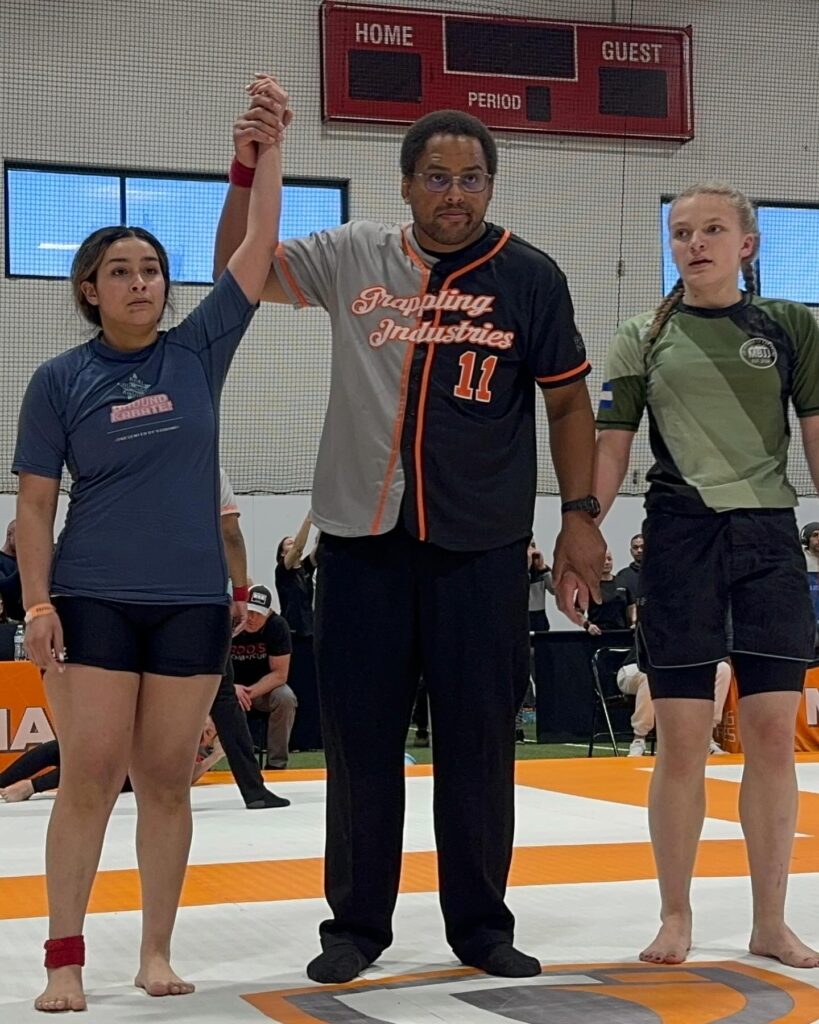There’s a good chance you’ve heard of Gi jiu jitsu and No Gi jiu jitsu. While both types of BJJ are classified as grappling, they each have their respective styles and have unique submissions depending on the ruleset. If you’re new to Brazilian Jiu Jitsu and want to get started, you’ve come to the right place!
A Quick History of Brazilian Jiu Jitsu

Known for its ground fighting techniques, Brazilian Jiu Jitsu’s roots go back to Japanese Judo and Jiu Jitsu techniques brought together last century by Grand Master Helio Gracie. Eventually, BJJ made its way out of Brazil in the late 1980s to early 1990s. Much of the spread of Brazilian Jiu Jitsu happened due to how effective it was at the beginning of the Ultimate Fighting Championships.
BJJ has since evolved into a globally recognized combat sport and self-defense system. Elements of BJJ can be found in other fighting systems like US Army Combatives and Mixed Martial Arts. Today, BJJ has found its place in the larger conversation of self-defense and combat sports much like Boxing and Wrestling.
Let’s talk about the Gi
The Gi is the traditional martial arts uniform complete with a robe, pants, and belt. This uniform is similar to the uniform used in other traditional martial arts like Tae Kwon Do and Karate but the BJJ Gi is most similar to the Judo Gi. Material used for BJJ Gis tend to be stronger to handle grip fighting and the friction that happens in ground fighting.
Sizing in Gis are a little different from buying regular every day clothing. Gi manufacturers typically follow a sizing system that runs from A0 to A5 with A5 being the largest available size. Sizing variables include height and weight.
Below is a list of different brands that offer Gis for Brazilian Jiu Jitsu. Keep in mind that these are not all of the brands out there but the goal is to inform you of the various styles available in the market:
What about No Gi gear?

No Gi gear can vary. For men and women, No Gi gear can include shorts with no pockets and a rashguard that’s either short-sleeved or long sleeve. No Gi competitors can also wear spats/leggings as well.
The sizing for No Gi is much more mainstream and traditional. These sizes tend to range from small to XXL. You can find No Gi gear available for purchase through the list of Gi manufacturers listed in the previous section.
What’s the difference between No Gi and Gi BJJ?
There are key differences between No Gi and Gi to be aware when you begin training and competing. These differences are also affected by the rulesets of competitions you’re training for and the nuances of your gym culture.
Grips
One of the biggest differences between Gi and No Gi BJJ are the available grips. Rolling in the Gi allows you to impose your game through gripping systems. You’re also able to use grips to set up submissions available only in the Gi. These submissions include the Bow and Arrow Choke and the Loop Choke.
Doing Jiu Jitsu in the Gi also makes it easier to control your opponent with the available grips. You can achieve this control from various angles and positions. This includes guard passing, maintaining top side control, and taking the back of your opponent.
With No Gi, grips are still a part of the game but you’re grabbing body parts for control. Since grips are limited to body parts like wrists and ankles, there tends to be more movement in No Gi. Fighters don’t have the added friction of the Gi. They also get slippier as fighters begin to sweat during a roll.
For No Gi fighters trying to transition to Gi training, it’s important to learn how to deal with the most common Gi grips. These grips include lapel grips, belt grips, sleeve grips, and pant grips. It can be frustrating trying to deal great grip fighters in Gi when you’re used to No Gi. However, investing the time to learn these skills is worth the effort and will allow you to have more fun.
Available submissions in No Gi vs. Gi
As mentioned before, the number of available submissions are different when comparing Gi to No Gi. Here’s a list of many of the submissions only possible with the Gi:
- Cross Collar Choke
- Bow and Arrow Choke
- Clock Choke
- Paper Cutter
- Loop Choke
When it comes to submissions found in No Gi, there aren’t any that can’t be done in Gi. The determining factor as to whether or not a submission can’t be done in the Gi are competition rulesets and in-house rules.
For example, it’s possible to heel hook in the Gi but heel hooks tend to only be reserved for No Gi. On the other hand, you’ll find submissions such as Kimuras and rear naked chokes both in Gi and No Gi. You’ll also find armbars, omoplatas, and triangles in both Jiu Jitsu camps.
How should I break up my time as a BJJ practitioner?

Should you spend more time in the Gi? Is it best to only do No Gi for six months out of the year then switch? Ultimately, all of it comes down to your personal goals.
For example, if you’re wanting to train for a No Gi tournament or you have an MMA fight coming up, focus on No Gi. If you’re wanting improve your grip fighting because you also cross-train in Judo, focus on Gi training. It really all depends on what you want to learn and achieve.
Let us be a part of your Brazilian Jiu Jitsu journey!
Whether you’re new to Jiu Jitsu or are looking for a new home gym, we’ve got you covered. Our classes meet the needs of hobbyists and active competitors. We’re here to help you achieve your dreams.
Sign up for your FREE one-week trial here!

